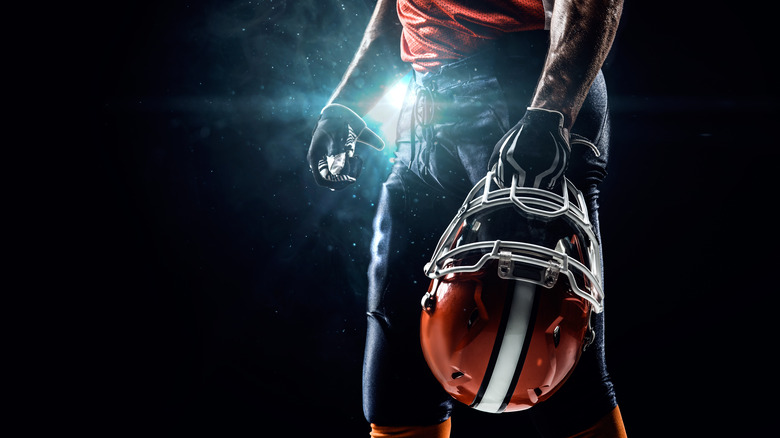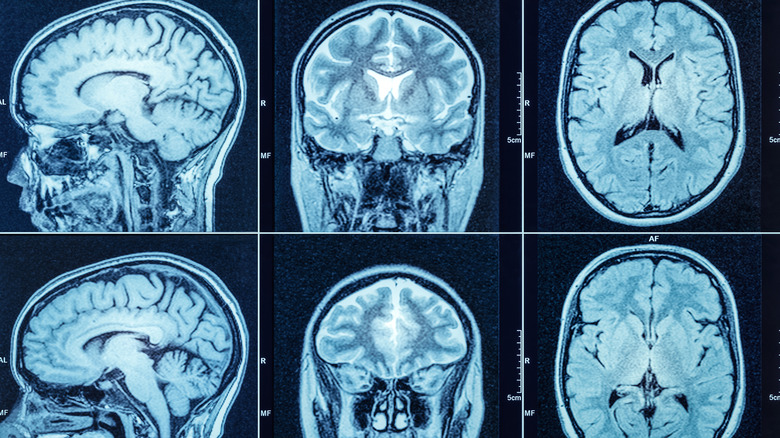What Fencing Posture In NFL Athletes Means About Brain Injuries
An NFL play that occurred on December 16, 2021, looked like one that has happened thousands of times during the decades of NFL games, except the end result was unnerving (via Twitter). Donald Parham Jr., a tight end for the Los Angeles Chargers, fell to the ground after catching a pass, and he hit the back of his head on the turf, losing the ball in the process (per the Daytona Beach News-Journal). One of his teammates immediately saw something was wrong as Parham was lying there with his eyes closed and his arms flexed and rigid in what medical practitioners call fencing posture, per Healthline. He had possibly suffered a brain injury.
This is not the first time this has happened, and while the NFL has highlighted the need for more protection for their players from head injuries, they can happen in a multitude of sports, including mixed martial arts, boxing, hockey, and rugby, and even non-contact sports when a collision happens, like soccer.
Concussions are probably one of the head injuries even casual sports fans are familiar with, but you may not know about the fencing position and how it can help doctors and other medical personnel diagnose a head injury.
Fencing response can aid in diagnosis
The fencing position, which is when a person's arms are raised while bent and stiffened, is a sign that something happened to the brain stem, according to Healthline. People usually stay like that for a few seconds, and then it goes away. However, even though it usually disappears quickly, it is not something that should be ignored, as brain injuries are not something to be trivialized. The fencing response can also aid in diagnosis as well, as it can even be a greater sign that a brain injury has happened than medical imaging, which doesn't always pick up concussions or other brain traumas.
Football is far from the only sport that one can see this result. Watch an MMA match and chances are you'll see a downed fighter adopt that pose after being knocked out. Boxers also run the same risk, as do non-athletes after what may seem like a simple punch to the head in a backyard brawl — basically anything that involves possible trauma to the brain.
While changes and improvements are being made with equipment, the big issue is that the inherent nature of brain injuries makes it difficult, if not impossible, to completely safeguard athletes, short of completely banning sports altogether. Unfortunately, when someone has repeat brain injuries, it can cause long-term damage to the brain and can even cause behavioral changes, and sometimes this can have tragic results — former NFL players like Junior Seau, Dave Duerson, and Vincent Jackson were just some of the ones who doctors determined (after their deaths) to have had CTE, or chronic traumatic encephalopathy (via Boston University CTE Center).

